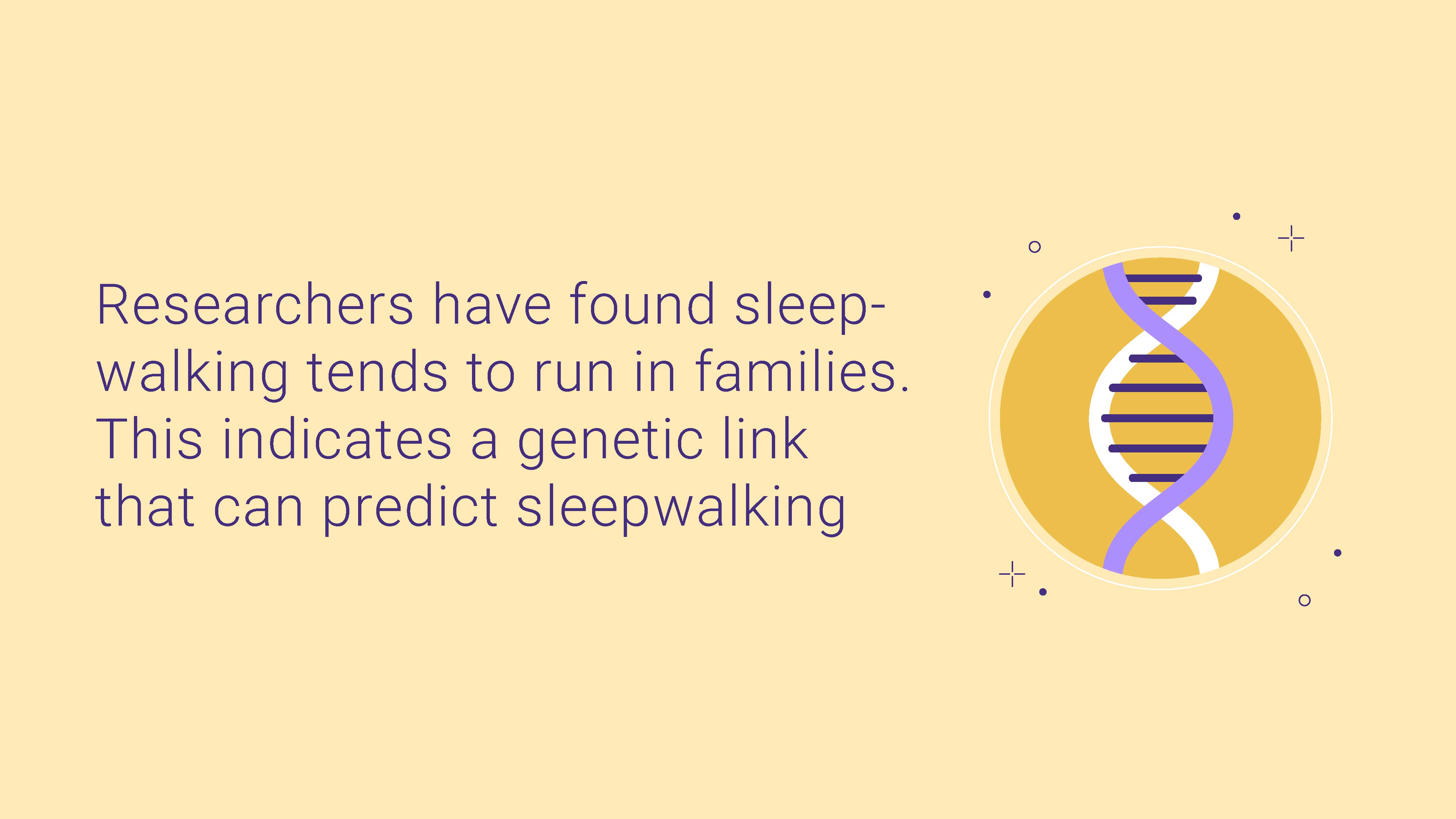A recent study found nearly a third of Americans experienced at least one sleepwalking episode in their life. If you suffer from this phenomenon or you know a sleepwalker, you may be wondering, “Why do people sleepwalk?”
In this article, we offer insight as to why people sleepwalk and outline some of the things you can do to prevent these episodes from happening in the future.
What Is Sleepwalking?

Sleepwalking, otherwise known as somnambulism, is a benign, self-limited behavior disorder that originates during deep sleep and results in walking or performing other complex behaviors while asleep. In addition to walking, other symptoms of sleepwalking can include:
- Sitting up in bed
- Appearing to be “in a daze”
- Leaving the house
- Clumsiness
- Not responding when spoken to
- Sleeptalking
Each night when you rest, your body goes through five or six sleep cycles. In each cycle, there are four stages of sleep. Sleepwalking occurs once you enter Stage 3. Though you enter Stage 3 sleep during each cycle, you’re more likely to sleepwalk during the first two cycles of sleep than the latter three or four.
During Stage 3, your brain produces slow delta waves, and it’s very difficult to wake up. During this stage of sleep, parasomnias such as sleeptalking, night terrors, and of course, sleepwalking occur. Stage 3 is classified as non-REM (NREM) sleep, or non-rapid eye movement.
Sleepwalkers may appear as though they are in a state between wakefulness and sleep, but they’re actually in a state of deep sleep.
How to Safely Wake a Sleepwalker
Waking a sleepwalker can be quite challenging. Even if you are to wake the sleepwalker up, they probably won’t remember the incident.
Sleepwalking episodes tend to last five to fifteen minutes. If you see someone sleepwalking, you should try to guide the person back to bed. If you cannot do so, you need to wake the person up.
There is a common belief that waking up a sleepwalker is dangerous, but failing to wake the sleepwalker is even more dangerous. If you don’t wake them up, they can hurt themselves or others in an accident as simple as slipping while sleepwalking down the stairs.
If you must wake a sleepwalker up, do so by creating a loud noise or disturbance at a safe distance. If you shake the sleepwalker violently, you could frighten them and elicit a fight or flight response.
Causes of Sleepwalking
Sleepwalking is more common in children than it is in adults, and most kids outgrow this sleep disorder by the time they reach their teens.
Researchers have found sleepwalking tends to run in families. This indicates a potential genetic link that can predict sleepwalking.

Those who suffer from sleep deprivation — especially a lack of deep sleep — are more likely to sleepwalk. Those with psychiatric disorders, such as depression, anxiety, posttraumatic stress disorder, or obsessive-compulsive disorder, are also more likely to suffer sleepwalking episodes. These individuals are more likely to experience at least one episode a year compared to those who don’t suffer from these issues, although researchers have not yet pinpointed why.
Other possible reasons for sleepwalking include the use of neuroleptics, stimulants, and antihistamines, along with pregnancy and obstructive sleep apnea.
What to Do If You Sleepwalk
There are no known direct treatments for sleepwalking. However, there are some things you can do to decrease the likelihood of this sleep behavior occurring.
First and foremost, understand that the failure to get enough sleep can have severe consequences. Take a look at your sleep schedule to determine if you’re getting enough shut-eye — the National Sleep Foundation recommends adults receive 7 to 9 hours each night.
Next, evaluate your sleep hygiene habits. Are you eliminating your exposure to blue light at least an hour before sleep? Blue light delays the release of melatonin, a naturally occurring substance that your body releases to help you fall asleep and stay asleep.
Keep your bedroom conducive for sleep, too. Invest in blackout curtains and set your thermostat between 60 to 67 degrees, as researchers have found temperatures in the 60s are best for rest.
If you find you’re still sleepwalking, think about consulting a doctor to conduct a sleep study. During a sleep study, doctors evaluate your sleeping patterns to determine if you’re suffering from a sleep disorder. By figuring out the cause of the problem, doctors can offer solutions to help you find better sleep.
Next Steps for Sleepwalkers
If you or someone you know sleepwalks, you may find the situation alarming. Although there are no direct treatments, improving your sleep hygiene or visiting a doctor for a sleep study can help identify the primary cause of sleepwalking and prevent it from happening.
Once you know what sleepwalking is and its cause, you can take effective steps towards getting sound sleep and reducing your amount of sleepwalking episodes. Talk with a trusted healthcare professional to learn more about your potential sleepwalking disorder and what you can do to stop it.
This article is for informational purposes and should not replace advice from your doctor or other medical professional.

The Conversation (0)
Start a discussion, our content team tries our best to respond to comments. However replies should not be a substitute for medical advice from your doctor.*